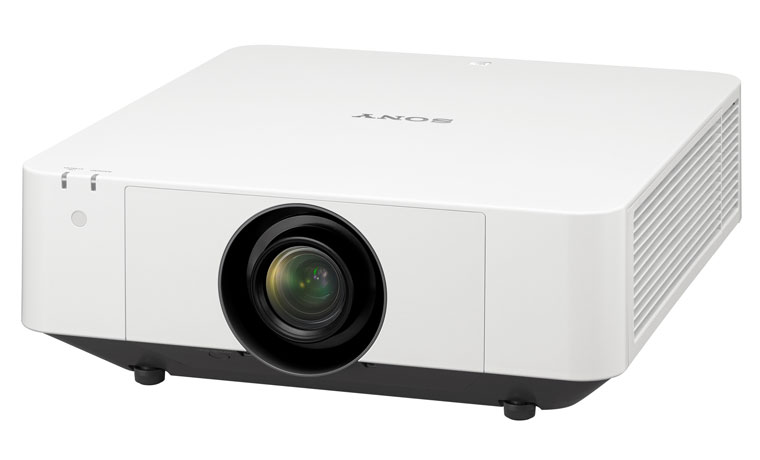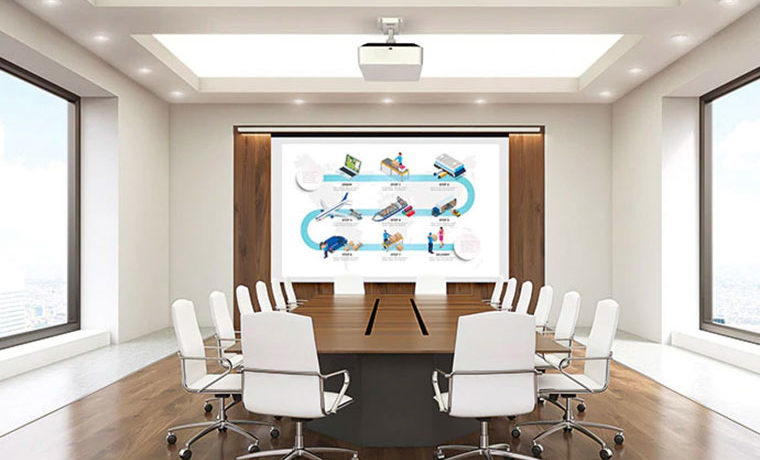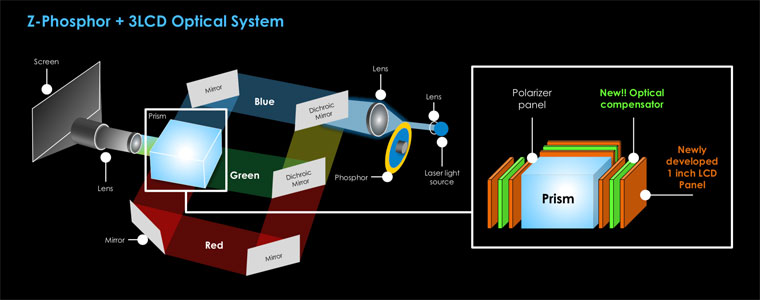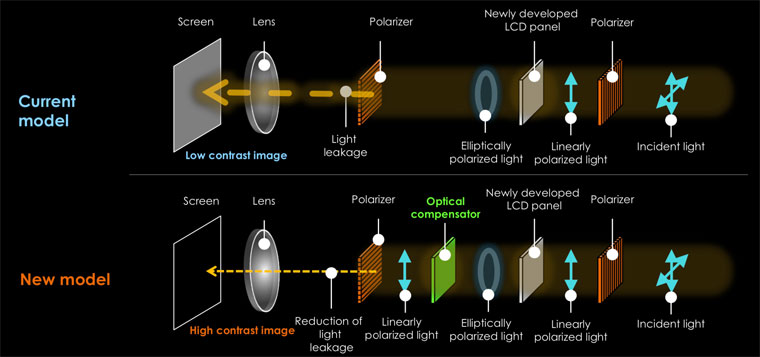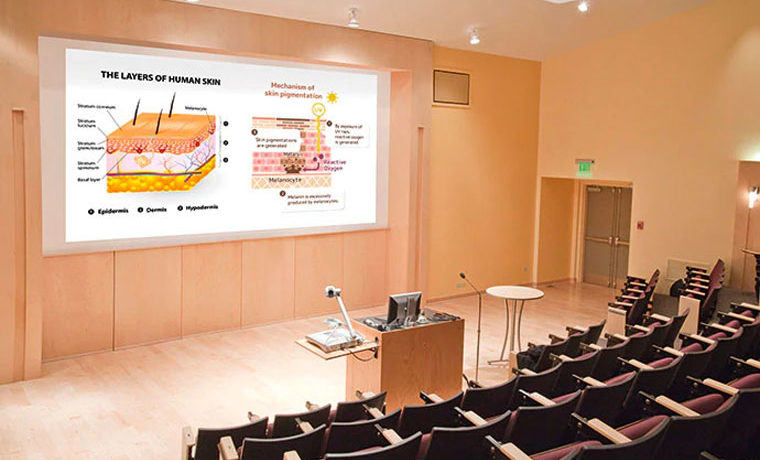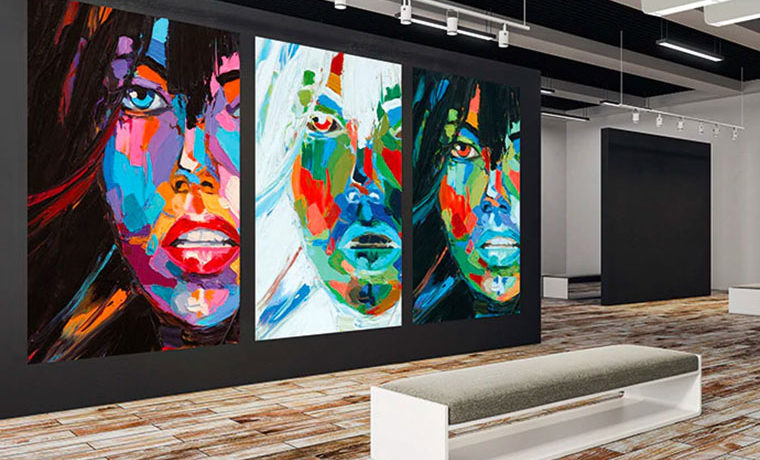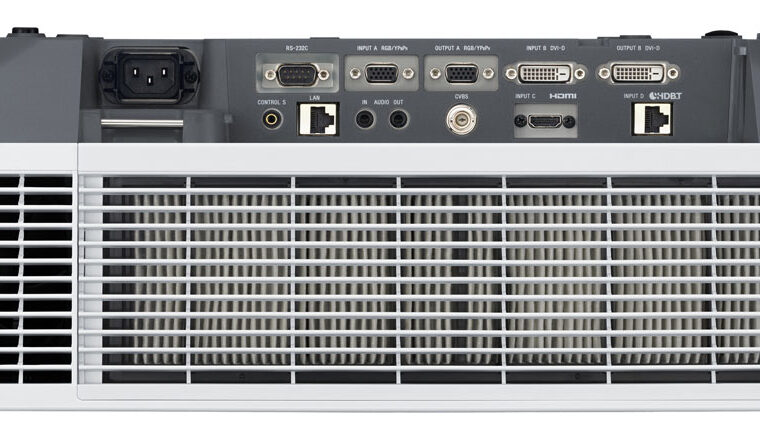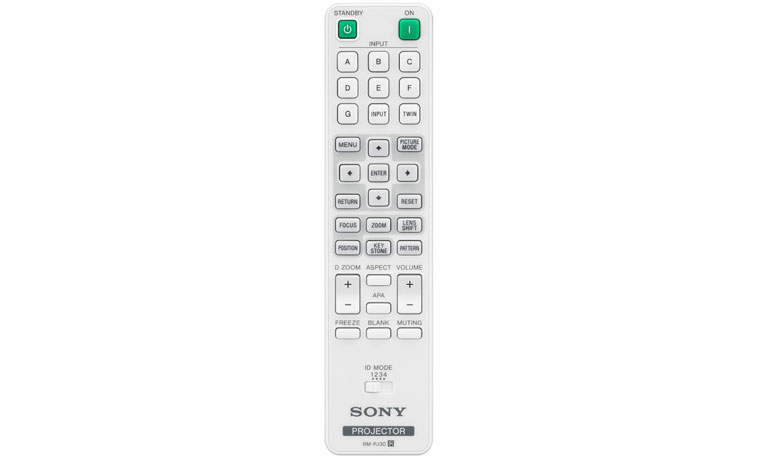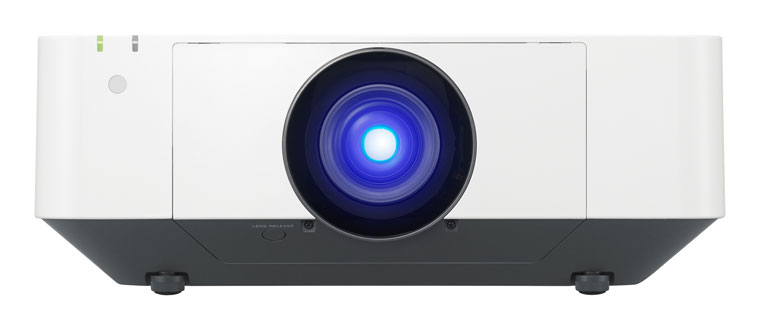A function called Intelligent Setting greatly simplifies installation. It offers presets that automatically adjust brightness, color, cooling, and other parameters for optimal performance in a variety of environments, such as meeting rooms, classrooms, museums, entertainment venues, and multi-screen setups.
Interestingly, the projector automatically recalibrates itself every 500 hours of use. When the unit is powered off at that point, it displays several test patterns, and an internal RGB sensor is used to recalibrate grayscale, color, and gamma. I'd love to see something like that in consumer projectors!
The FHZ75 can accommodate a variety of available lenses, all of which provide powered focus, zoom, and lens shift, though there are no lens memories to store different settings. The supplied standard lens has a zoom ratio of approximately 1.6 and a throw ratio from 1.39:1 to 2.23:1. It also offers a wide lens-shift range (-5%/+70% vertical, ±32% horizontal), which provides great flexibility in placement. In addition, the projector provides horizontal and vertical keystone correction, but I strongly recommend against using them if possible, since they reduce visible detail in the image.
Sony's Reality Creation video-processing technology is found in many of the company's consumer and commercial display products, including the FHZ75. It uses a pattern-matching database to optimize upscaled images while minimizing induced noise. I've seen it in action many times, and it works quite effectively.
In some applications, multiple projectors are used to create a truly giant image. The FHZ75 offers seamless edge blending, which joins color-matched images from several projectors into one super-sized display.
All projectors have air filters that prevent dust from invading the interior, and this model is no exception. Even better, it automatically cleans the filter after every 100 hours of use by knocking the filter to dislodge dust into an integrated absorber.
The FHZ75 is fully compatible with the leading control, monitoring, and management systems, such as Crestron Connected and Extron XTP Systems. This allows users to easily integrate the projector into their existing system, which is especially important if it's placed in a relatively inaccessible location, such as a high ceiling.

